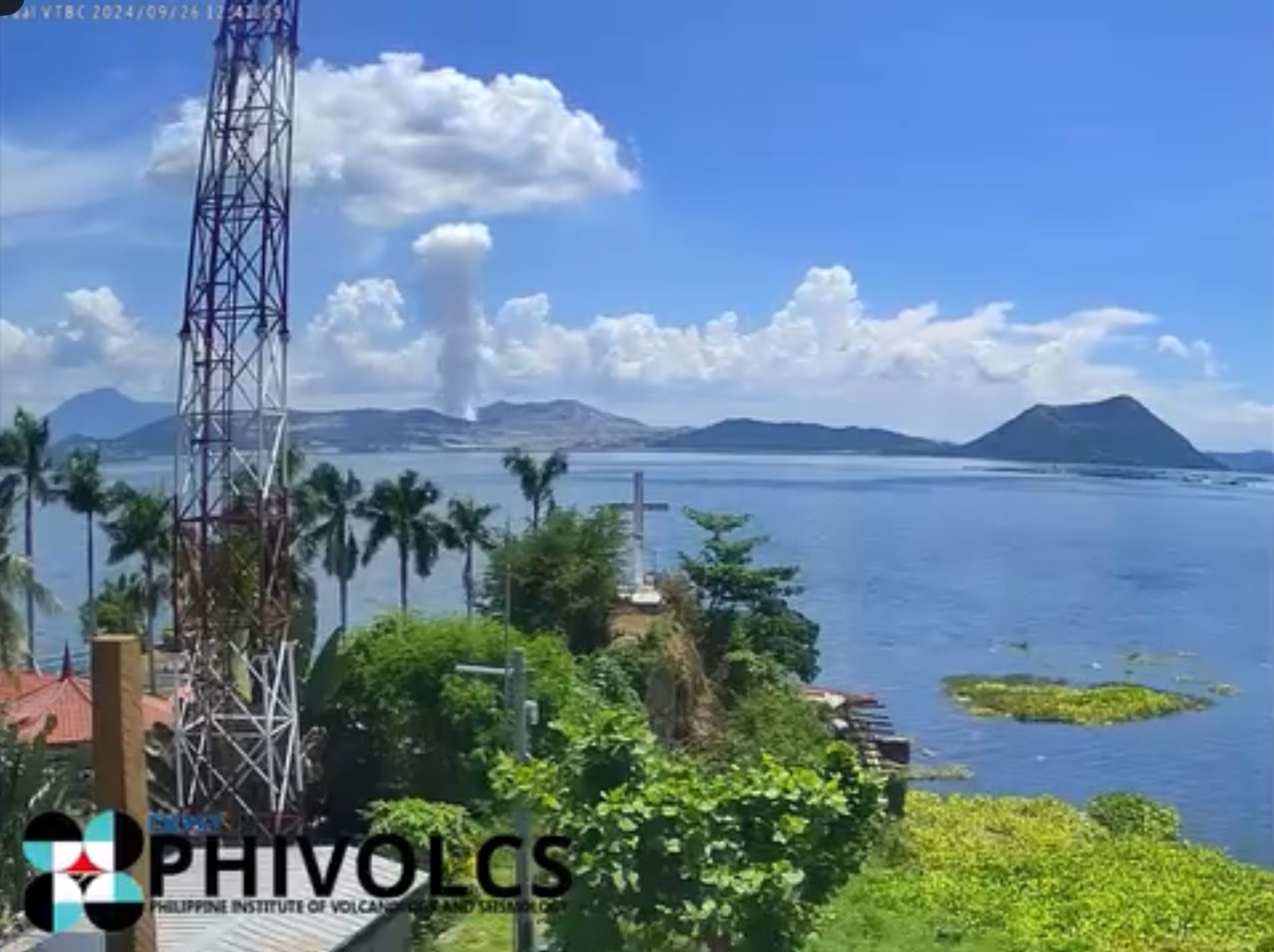Taal Volcano logs 17 phreatic events in over a week; magmatic eruption still unlikely, says Phivolcs
At A Glance
- Taal Volcano's weak phreatic activity is likely fueled by continued emissions of hot volcanic gases at its main crater.
- Current assessments of volcanic earthquake activity and ground deformation show that a magmatic eruption is still not imminent.
- Phivolcs reiterated that Alert Level 1 remains in effect, which means Taal Volcano is still in an abnormal condition.

The Philippine Institute of Volcanology and Seismology (Phivolcs) reported five weak phreatic events at Taal Volcano on Tuesday, Oct. 1, bringing the total to 17 since Sept. 22.
Phivolcs said the steam-driven activities on Tuesday occurred between 1:10 a.m. and 4:37 p.m., lasting from two to six minutes.
During these events, steam-laden plumes rose from 300 to 2,100 meters above the Taal Main Crater before drifting east-northeast.
Phivolcs said Taal Volcano’s sulfur dioxide (SO2) emissions averaged 1,354 tons per day as of Sept. 30, while the average since January remained high at 6,760 tons per day.
It explained that the weak phreatic activity is likely fueled by continued emissions of hot volcanic gases at the Taal Main Crater.
Phivolcs warned that there is a possibility of more similar events. However, current assessments of volcanic earthquake activity and ground deformation show that a magmatic eruption is not imminent.
Phivolcs reiterated that Alert Level 1 remains in effect, which means Taal Volcano is still in an abnormal condition.
It pointed out that this alert does not imply that volcanic unrest has ceased or that the risk of eruptive activity has diminished.
Under Alert Level 1, sudden steam-driven or phreatic explosions, volcanic earthquakes, minor ashfall, and lethal accumulations or expulsions of volcanic gas can occur and threaten areas within the Taal Volcano Island (TVI).
Furthermore, Phivolcs said the degassing of high concentrations of volcanic SO2 continues to pose significant long-term health risks to communities surrounding Taal Caldera that are frequently exposed to volcanic gases.
It strongly advised against entry into TVI, Taal’s permanent danger zone, particularly near the Main Crater and the Daang Kastila fissure.
Local government units are also encouraged to monitor their communities’ preparedness and implement appropriate measures to mitigate risks associated with long-term degassing and related phreatic activity.